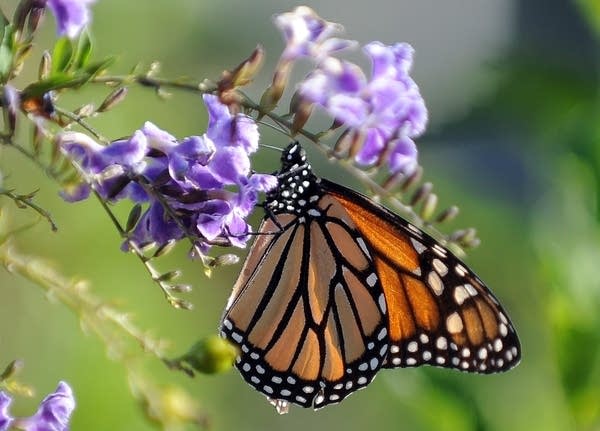How would the Endangered Species List help monarchs?

The monarch butterfly could be added to the Endangered Species List next year, and that could be good news for other species too, says biologist Karen Oberhauser.
The population of monarchs has declined significantly in recent years. Oberhauser, who's a monarch expert at the University of Minnesota, said one of the main reasons for the decline is loss of habitat.
Since monarchs east of the Rocky Mountains migrate to Mexico every year, they need habitat across a wide area. They need milkweed as a breeding habitat and flowering plants as a source of nectar along their route to Mexico.
"It's kind of like a chain," Oberhauser said. "They need habitat along all the links in this chain and they're losing it during each of these migratory stages."
Create a More Connected Minnesota
MPR News is your trusted resource for the news you need. With your support, MPR News brings accessible, courageous journalism and authentic conversation to everyone - free of paywalls and barriers. Your gift makes a difference.
Monarchs depend on milkweed, a plant that is disappearing from agricultural fields.
"There used to be a lot of milkweed in agricultural fields, and that milkweed is no longer there because farmers are controlling weeds more effectively with herbicide-tolerant crops or GMO crops," Oberhauser said.
If the bright orange and black butterflies do get added to the Endangered Species List, the federal government could protect habitat. Monarchs' habitat at the overwintering sites in central Mexico is already protected by the Mexican government.
Oberhauser suggests changing road side management policies so that they're not mowed when monarch eggs are being laid.
"It would not only benefit monarchs it would benefit a lot of other species that share habitat with monarchs," Oberhauser said.